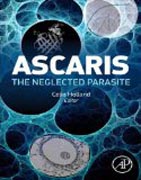
This book tackles a number of different perspectives concerning the parasitic helminth Ascaris, both in animals and in humans and the disease known as ascariasis. It seeks to identify interesting, exciting and novel aspects, which will interest readers from a broad range of disciplines. Over a quarter of the world's population are infected with the human roundworm, and the equivalent in pigs is equally ubiquitous. Both contribute to insidious and chronic nutritional morbidity, and this has been quantified, in humans, as disability adjusted life years approximating 10.5 million. Ascaris larvae develop in host parenteral tissues, and the resultant pathology has been condemnation. Ascariasis, despite its staggering global prevalence and the sheer numbers of people it infects, remains a classic neglected disease. However, renewed interest in the consequences of early infection with worms from the perspective of immune modulation, co-infections and the development of allergy further enhances the relevance of these parasites. Brings together a wide range of topics and approaches and recent, comprehensive and progressive research concerning the neglected parasite Ascaris Provides a blueprint of how a single parasite entity can stimulate interest in basic biology, clinical science, veterinary science, public health and epidemiology Presents a wealth of new insights given that a book on this parasite has not been published for over 20 years 16 chapters from a range of top authors from around the world INDICE: Section I: Biology of Ascaris 1. Immunology of Ascaris and immunomodulation 2. Ascaris and allergy 3. The significance of ABA-1 4. Implications of co-infection with Ascaris Section II: Model systems 5. The use of the mouse model to explore the role of the liver in susceptibility and resistance to Ascaris 6. Unique attributes of Ascaris as a model system: Neurobiology Section III: Epidemiology of ascariasis 7. Ascaris lumbricoides: new epidemiological insights and mathematical approaches 8. Genetic epidemiology of Ascaris 9. Mathematical Modeling Section IV. Host and parasite genetics 10. New insights into evolutionary-history and phylogeography of Ascaris 11. Ascaris genomics 12. Human host susceptibility to ascariasis Section V. Clinical aspects and public health 13. The extent of the problem: numbers and impact (Ascaris lumbricoides) 14. Impact of Ascaris suum in livestock 15. Approaches to control of STHs including ascariasis 16. Diagnosis and control of Ascaris suum
- ISBN: 978-0-12-396978-1
- Editorial: Academic Press
- Encuadernacion: Cartoné
- Páginas: 460
- Fecha Publicación: 02/08/2013
- Nº Volúmenes: 1
- Idioma: Inglés
